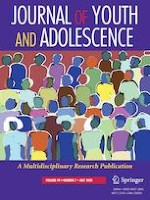02-01-2020 | Empirical Research
Peer Support and Role Modelling Predict Physical Activity Change among Adolescents over Twelve Months
Gepubliceerd in: Journal of Youth and Adolescence | Uitgave 7/2020
Log in om toegang te krijgenAbstract
Physical activity levels decline during adolescence; however, some individuals initiate or maintain physical activity participation during this period of life. Socialisation impacts physical activity participation, yet few studies have explored the role of parental and peer processes concurrently on youth physical activity transitions over time. This study examined whether mother’s father’s and friends’ support, modelling and teasing predicted adolescents’ physical activity initiation, drop-off or maintenance over twelve months. In total, 803 adolescents (62.5% females, M age = 13.72) from Dublin, Ireland, completed self-report measures of support, modelling, teasing, and physical activity. Participants were classified as physical activity maintainers (17.8%), low active maintainers (58.8%), drop-offs (10.3%) or physical activity initiators (13.1%). The results revealed that parental support and modelling were unrelated to adolescents’ physical activity transitions, however mother’s and father’s support predicted sustained physical activity participation twelve months later. In contrast, peer processes predicted physical activity maintenance, initiation and drop-off at one-year follow-up underscoring the salient role of peers for adolescents’ behaviour change. In line with expectancy-value theory, the findings indicate that parents and peers represent distinct socialising agents that impart their influence on adolescents’ physical activity maintenance and behaviour change through various mechanisms, highlighting the need to consider both sources of socialisation concurrently in future studies of adolescent behaviour change.
